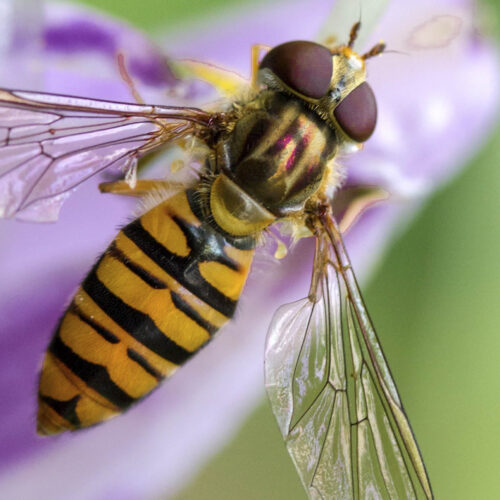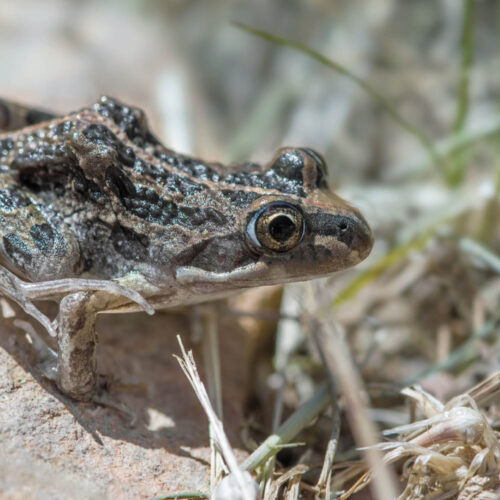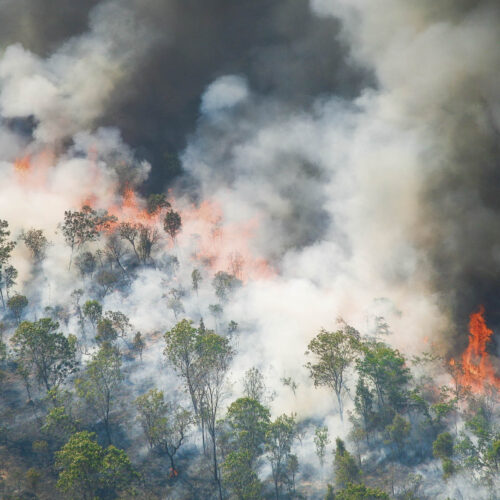Discover the origins of the Slow Food movement
2009-12-21T22:26:38+11:00
We head to the heart of the Slow Food movement in Italy, discovering the organic wonders of Cinque Terre.
It had been my dream for years to head to Italy and seek out the essence of the Slow Food movement. Astonishingly, on a tight budget but with good preparation, my dream swiftly came together this year. Before it could be frightened away, I found myself hurtling down ‘Slow Food Street’ in Bra, the northern Italian city where it all began.
Leading the way was the dynamic Elena Aniere, who was giving me a tour of the city’s many slow food haunts and advice on my planned travels to the wonderful towns of the Cinque Terre. Elena was in the midst of frantically organising the upcoming Terra Madre event, one of the inspirational initiatives that has grown out of the movement. Literally ‘Mother Earth’, this biennial project began in 2004 with a groundbreaking world meeting of food communities and is supported by such luminaries as Frei Betto, undersecretary to President Lula of Brazil, and Prince Charles.
Elena and I to make a brief detour to pay our respects at the holy grail of Slow Food: the 4-star Osteria Boccondivino (The Divine Mouthful restaurant), where the movement’s founder, Carlo Petrini, first hatched his idea. Unfortunately, we can’t stop for even a mouthful there, given the constraints of my paradoxically fast-paced tour.
The beginning
Before I left Australia, I was abysmally ignorant of the Slow Food movement which began 22 years ago. It was back then that Petrini came up with his plot to reverse the Fast Food-isation of the world – particularly in Italy. Appalled at the appearance of a MacDonalds in Rome in 1986, Petrini was determined to stop the rot – or at least slow it down – by forging a renewed consciousness about food and raising awareness of the insidious numbing-down of our taste buds.
Italy is fertile ground for such a movement to be born and flourish. Italians take enormous – and eminently justifiable – pride and delight in their regional specialities and delicacies, which can be quite different even in adjoining towns. The Italian term campanilismo is often bandied about and refers to an extreme devotion to one’s own neighbourhood. This is especially relevant in terms of food products and recipes which are endlessly varied all over Italy and can give rise to some friendly rivalry.
Petrini’s brainchild has grown up to father an impressive array of radical offspring. The growth has been so overwhelming that three years after the intial Slow Food Italy was born, Slow Food International was founded by Folco Portinari, to function as a separate but interwoven organisation to cope with the ever-burgeoning number of members – now almost 100,000 in 107 countries (including Australia), forming over 850 convivia (chapters). I wonder if Petrini ever imagined just how successful and multi-faceted his movement would become. The word “convivium” is Latin for a feast, entertainment or banquet and has been taken up to define the local branches that get together regularly for convivial happenings.
Cinque Terre
Among the highlights of my Slow Food quest turned out to be the renowned Cinque Terre (five lands) a collection of five villages – Monterosso, Vernazza, Corniglia, Manarola, Riomaggiore – which cling to the dramatic coastal cliffs of a harsh but stunningly beautiful landscape in eastern Liguria. My aim is to explore not the breathtaking Via dell’Amore, the tourist-clogged trail linking the five towns via winding paths and tiny inlets, but to research the organic farming and food initiatives of the Parco Nazionale di Cinque Terre. The Park was formed two years after the area was declared a UNESCO World Heritage site in 1997, the founders deciding that this would help preserve its long-held organic traditions and give impetus to the restoration its 6700 kilometres of dry-stone walling that hold its myriad terraces and paths in place.
The use of cultivated terraces
Before my visit to the vineyards, olive groves and orchards on these cultivated terraces, I’d been psyching myself up to face a trip on the tiny monorail that scales the virtually vertical slopes rising as a dramatic backdrop above the villages. Luckily pelting rain means it’s too dangerous to use the rack rail – strictly speaking it’s for lugging crates of produce and equipment, not passengers – so I’m off the hook.
However, the rain and icy wind don’t dampen the enthusiasm of Piero Moggia, President of the Cooperativa Sentieri e Terrazza (Tracks and Terraces Cooperative), and Marinella Tarabbo who is in charge of the fully organic cultivation of the dazzling array of produce.
The terraces have been producing olives, citrus, grapes and honey for local consumption for over 1000 years. These have been used in such products as their light and delicate extra virgin olive oil, two sweet wines: limoncino and sciacchetrà, lemon marmalade and pesto. The aim is to extend their market beyond the Cinque Terre to gradually go national. They want to offer the young an incentive to get back on the land – as well as lightening the emphasis on tourism.
Piero and Marinella are inducting me into the nitty gritty of the mammoth rescue mission the Cooperativa has been undertaking in their struggle to maintain and preserve these productive terraces.
Beauty is all around you
Marinella points out lavishly flowering mallow along the pathways and picks an aromatic posy of lavender, sage and rosemary – all used in their fully organic beauty products made in the Cooperativa’s little factory. I like the Latin quote on their curvy cardboard packaging: “How can a man die with sage growing in his garden?”.
After passing through a gate designed to keep out wild pigs that are partial to the odd grape, I’m shown a vineyard and how the vines are tied in the traditional way – an elderly Cinque Terran lady is passing on the old know-how. Finally we make our way to the hilltop and retreat into a stone garden shed for hot, strong coffee – which thaws out my ice-block feet. Ma che bella vista!
Local products: olive oil and saffron
Next on the agenda is the communal oil press where the Cooperativa extracts its organic extra virgin olive oil. They no longer use the 19th century oil press or stone flour mill, once used for wheat and chestnuts, on the floors below. However, they can still be powered if needed by a huge water wheel run from a mountain stream.
One of the many organic products coming out of Cinque Terre is saffron. Many Italian farmers are diversifying into this luxury market, growing commercial quantities of the colourful crocus flower that is now an endangered species in the wild. In fact, there’s a Sardinian saffron that is on Slow Food’s Presidia list.
Harvesting is incredibly labour-intensive – approximately 150,000 flowers are needed for one kilogram of dried saffron. According to Irene Mazzoni of Corte di Valle (an upmarket farmstay in Tuscany where they grow and process their own saffron): “You may seriously compare saffron with the gold price!” It is pricey but its intense fragrance lends any dish a wonderfully complex flavour (see recipe).
Generations of pasta
While I was staying at Corte di Valle, I met up with Giovanni Fabbri, fourth generation pasta-maker from nearby Strada in Chianti. Giovanni encapsulates the Tuscan qualities of warmth, kindness, pride and passion. Despite the chaos of major renovations at his premises (bought by his bisnonno – great grandfather – in 1895) he insists on taking me on a tour of his organic and biodynamic pasta factory. Giovanni is keen to impress on me the importance of the slow, gentle drying process which is integral to the excellence of his product.
“Never more than 38°C,” he says to me more than once, referring to the maximum drying temperature that follows his quintessentially traditional methods. This is in stark contrast to the industrially produced stuff which is dried in as little as three hours – Giovanni’s takes a few days.
Although Giovanni’s equipment is electric-powered whereas his great grandfather used horsepower to mix the flour and water for his dough, Giovanni still uses “an old friend” – a 50-year-old piece of machinery – to extrude the strips of pasta. He takes a boyish delight in his lifetime of pasta-making, but doesn’t know if any of his children will follow in his path.
Always something to eat
Over a ‘light’ lunch at Mangiando mangiando! (Eating eating!) in neighbouring Greve, Giovanni instructs me in the fine art of tackling his fabulous pappardelle pasta which is flavoured with juniper berries and rosemary (Giovanni reminding me that the 38°C drying process enhances the pasta’s flavour absorption). The approach to eating this very broad, frilly-sided pasta is to slide the fork horizontally into it and then lift and turn. I make a bit of a hash of it but nonetheless love it all – including the next courses of peppery, slow-stewed beef followed by an exquisite chocolate pudding lightly covered in filigreed orange peel in syrup.
All this is accompanied by a 2003 ‘Renzo Marinai’ Chianti Classico, which lives up to its maker’s recommendation and went surprisingly well with the chocolate and orange flavours. (Earlier we had called on the said Renzo at his organic vineyard and wheat farm, which is also a farmstay. While there, Renzo’s wife was putting the dough into their wood-fired oven for the daily bread – made from their own organic wheat. You don’t get much slower food than that!)
True guardians
Suitably fortified by our lunch at Mangiando mangiando!, we visit the legendary ‘celebrity butcher’, Dario Cecchini at Panzano. Dario is not simply a butcher: he’s a world-famous, Dante-reciting actor who provides virtually a floor show of entertainment in his butcher shop. To the accompaniment of classical music he tenderises his customers with wine and divine nibbles as they enjoy his works of art and the general fun and games. You don’t just pop in for a few snags to Dario’s macelleria – it’s a slow social occasion.
My visit to Cinque Terre and this region was wonderful and infused with goodwill. In a world of industrialised agriculture and exploitation of our Earth’s dwindling resources, I see the Slow Food movement as a peaceful resistance movement. With good humour and tremendous energy, Carlo Petrini has inspired tens of thousands to work against the regimenting and denaturing of our food.
As Petrini says: “Farmers and peasants are the true guardians of our planet, conservers of biodiversity and traditional wisdom.”
TASTE BUDS
Saffron fruit loaf
This recipe comes from the Corte di Valle farm-stay.
Ingredients
- 450g flour
- 2 1/2 glasses milk
- 15g fresh yeast
- 175g butter
- 80g sugar
- 50g candied orange peel
- 100g raisins
- 0.10g saffron threads
- 1/2 teaspoon nutmeg
- 1/2 teaspoon cinnamon
Time: 90 minutes
Infuse the saffron threads in warm milk for at least an hour. Set aside a teaspoon of sugar and the yeast to be added to the milk later.
Put the flour in a bowl (keeping back a spoonful) and mix in the nutmeg and cinnamon. Soften the butter and mix into the flour, kneading it and forming a hole in the centre.
Add the teaspoon of sugar and the yeast to the saffron milk infusion and pour into the hole without mixing it into the flour. Sprinkle the surface of the mixture with the remaining flour and let it rest for 15 minutes until the yeast starts to ferment.
Add into the hole the remaining sugar, candied peel and the raisins and mix to a dough. Cover with a cloth and leave until the dough has redoubled.
Then put the dough onto a floured board and form it into a circular shape and place into a round baking tin. Preheat the oven to 180°C and cook for about an hour.
Allow to cool, then cut into slices.
For more eco-living ideas head here. You can also subscribe to the magazine for organic tips for your garden and home.






